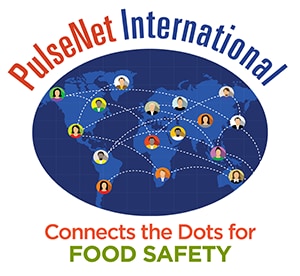Key points
Whole genome sequencing (WGS) is a more thorough method to gather information on bacteria than traditional (older) methods. CDC and PulseNet USA are assisting global PulseNet International partners with applying WGS methods into their laboratories.

Takeaways
Vision: To save lives and money by using WGS in all public health laboratories globally to improve our response to foodborne illnesses and outbreaks.
Mission: To standardize methods and share information in real time within regional and global laboratory networks. This supports disease tracking and outbreak response.
Status: PulseNet International has developed, validated, and issued standardized procedures for global partners to perform WGS.
Process
Steps that PulseNet International is taking to standardize WGS:
- Share laboratory protocols for different sequencing platforms.
- Provide results from validation studies.
- Establish a quality control and assurance program.
PulseNet International is standardizing how WGS data is analyzed by using a method called core genome multi-locus sequencing typing (cgMLST), also known as the gene-by-gene approach. This method was chosen because:
- It can be standardized.
- It offers high epidemiological continuity.
- It generates stable and portable results that can be easily shared and compared.
- Strains can be named in a way that reflects their similarity to each other.
- Data can be analyzed by laboratorians without formal training in bioinformatics.
- Information such as antimicrobial resistance and serotype, can be identified at the same time.
- Analysis tools can be established in the public domain.
